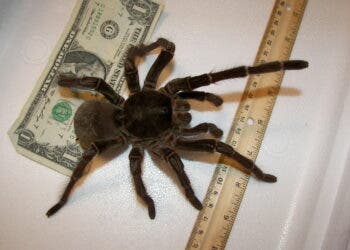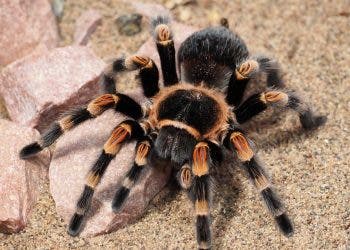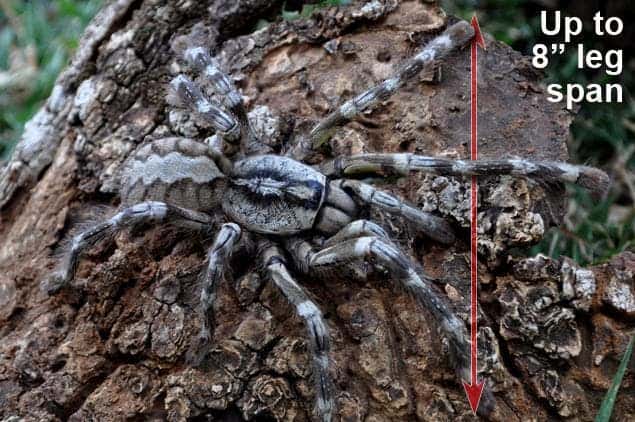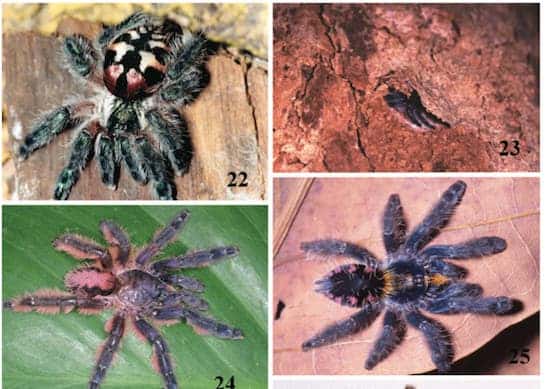Within one of the Earth’s hottest biodiversity hotspots, daring explorers discovered a hidden biological wonder. More than three dozen species of animals new to science have been reported by an international team of researchers. Among the new species, is an amazing tarantula that’s peculiar both in appearance in behavior.
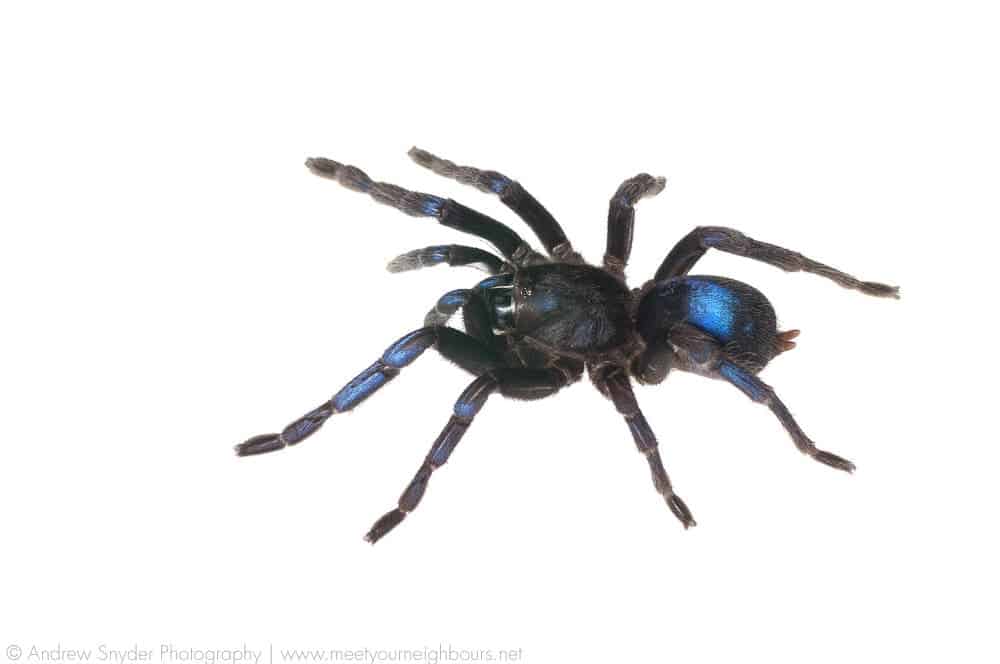
The striking new tarantula was found one fateful night by Andrew Snyder, a herpetologist for the Biodiversity Assessment Team, while he was surveying the Kaieteur National Park (KNP) and the Upper Potaro area in Guyana.
“During this particular night, my light beam reflected back with a small glint of brilliant, cobalt blue sticking out of a small hole in a rotting stump. At first I quickly dismissed it—surely it was just the eye shine coming from a spider. But something was different, and I must have been subconsciously aware. Something made me go back,” the herpetologist remembered.
“And it is a good thing I did,” he wrote on the Global Wildlife Conservation blog, which along with the World Wildlife Fund-Guianas comprises the Biodiversity Assessment Team.
The creature Snyder encountered was found in a tube-shaped hole inside a rotten stump. Upon inspecting the stump closely, the herpetologist noticed there were multiple holes, most of which, if not all housed a tarantula. That was very odd since tarantulas are typically solitary yet here, they were congregating inside the same stump. It remains to be seen whether the species, which hasn’t been formally described yet, is communal or the individuals merely tolerate each other.
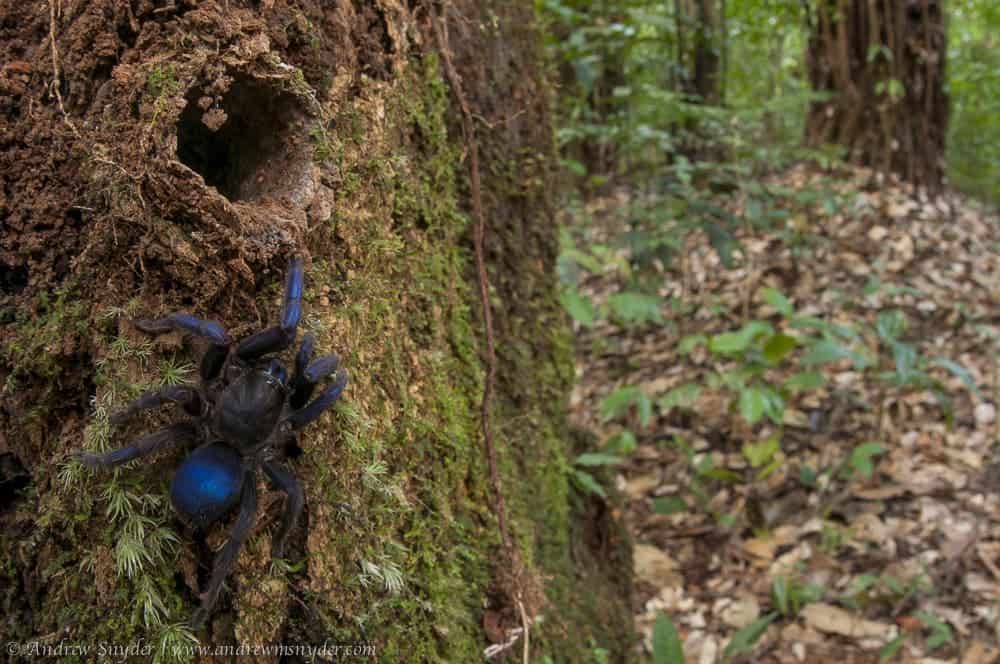
Among the other surprising finds from Guyana were six kinds of fish, three plants, 15 aquatic beetles, and five odonates (an order of carnivorous insects, encompassing the dragonflies and the damselflies). Additionally, researchers discovered several species that weren’t new to science but which, nevertheless, were spotted for the first time in the country.
“This upland region where the surveys took place represents a very important transition zone for species between the lowlands and the highlands and was characterized by high levels of endemism for many taxonomic groups. This rapid inventory was able to provide an important glimpse into this special area and habitats, though more work is necessary to shed light on all of the region’s secrets,” Snyder wrote.
All in all, this was one fruitful month-long survey. And, frankly, the wealth of discoveries isn’t all that surprising considering the area is home to more than 50 percent of the birds, 40 percent of the odonates, 30 percent of the mammals, and 43 percent of the amphibians known to occur in Guyana.
“This brilliant tarantula should stand as a beacon for invertebrate conservation in Guyana. Though often overlooked and not typically mentioned during conservation conversations, invertebrates are vital to the proper maintenance and function of ecosystems and are just as important as charismatic macrofauna. Hopefully a species like this can represent the flagship for invertebrate conservation and promote awareness for less appreciated taxa,” Snyder concluded.
